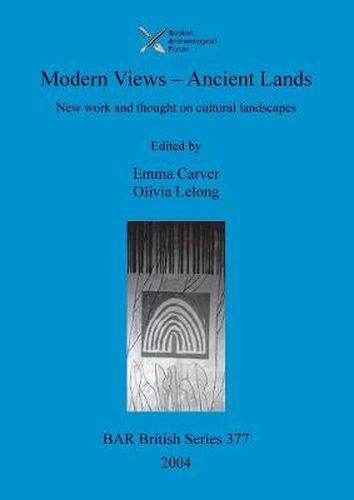Readings Newsletter
Become a Readings Member to make your shopping experience even easier.
Sign in or sign up for free!
You’re not far away from qualifying for FREE standard shipping within Australia
You’ve qualified for FREE standard shipping within Australia
The cart is loading…






This title is printed to order. This book may have been self-published. If so, we cannot guarantee the quality of the content. In the main most books will have gone through the editing process however some may not. We therefore suggest that you be aware of this before ordering this book. If in doubt check either the author or publisher’s details as we are unable to accept any returns unless they are faulty. Please contact us if you have any questions.
This volume emerged from a conference held in Glasgow in October 2001, organised by Scottish Archaeological Forum. The study of cultural landscapes is growing increasingly more sophisticated in terms of technology and method, but also in terms of the conceptual approaches and theoretical frameworks applied to that study.At the same time, landscape as a modern construct is becoming ever more complex, even contentious:who owns and manages land, for what purposes and to whose benefit?what defines wild land,how ‘wild’ were our landscapes in antiquity and to what extent should this perceived wildness be preserved?In Scotland, in particular, issues of land reform have come to the fore in recent years, with crofters contesting the right to buy land and the recent establishment of the first national parks.Needs for economic sustainability are often at odds with the interests of heritage management and conservation. The 15 contributions to this volume are divided into four sections:Landscapes, Seascapes, The Management of Landscapes, and Approaches to Interpretation.The first two sections showcase particular studies of archaeological landscapes and seascapes from a variety of perspectives, although a number of common themes emerge from the diverse studies.
$9.00 standard shipping within Australia
FREE standard shipping within Australia for orders over $100.00
Express & International shipping calculated at checkout
This title is printed to order. This book may have been self-published. If so, we cannot guarantee the quality of the content. In the main most books will have gone through the editing process however some may not. We therefore suggest that you be aware of this before ordering this book. If in doubt check either the author or publisher’s details as we are unable to accept any returns unless they are faulty. Please contact us if you have any questions.
This volume emerged from a conference held in Glasgow in October 2001, organised by Scottish Archaeological Forum. The study of cultural landscapes is growing increasingly more sophisticated in terms of technology and method, but also in terms of the conceptual approaches and theoretical frameworks applied to that study.At the same time, landscape as a modern construct is becoming ever more complex, even contentious:who owns and manages land, for what purposes and to whose benefit?what defines wild land,how ‘wild’ were our landscapes in antiquity and to what extent should this perceived wildness be preserved?In Scotland, in particular, issues of land reform have come to the fore in recent years, with crofters contesting the right to buy land and the recent establishment of the first national parks.Needs for economic sustainability are often at odds with the interests of heritage management and conservation. The 15 contributions to this volume are divided into four sections:Landscapes, Seascapes, The Management of Landscapes, and Approaches to Interpretation.The first two sections showcase particular studies of archaeological landscapes and seascapes from a variety of perspectives, although a number of common themes emerge from the diverse studies.